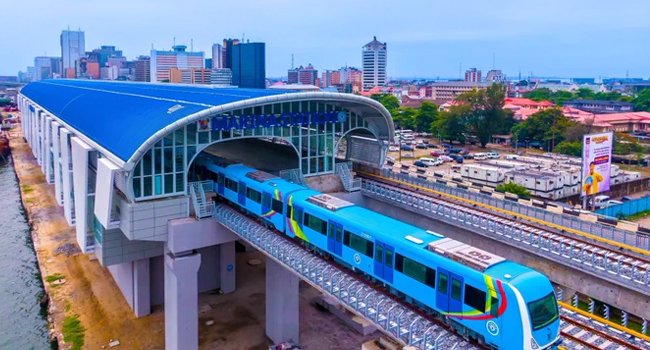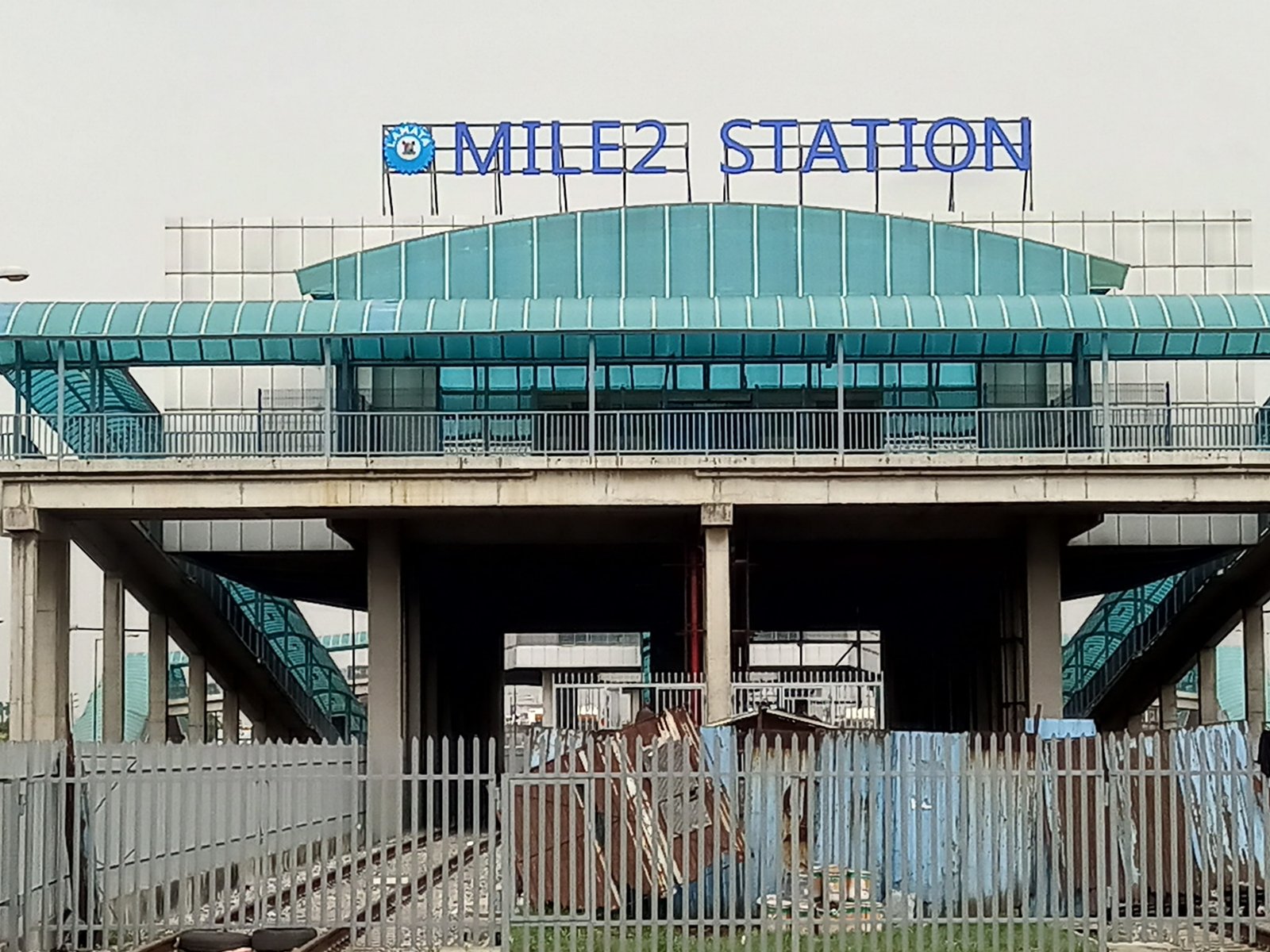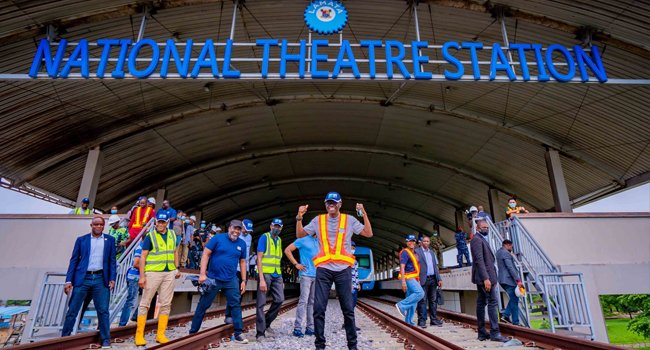
Lagos bustles with energy, but so can your commute. If you work on the island, finding the perfect place to live can be a balancing act between affordability and a manageable commute. Thankfully, the recently opened Lagos Blue Line is a game-changer.
This new light rail system offers a fast and reliable way to travel across the city. The Blue Line runs from Mile 2 in the east, all the way to Marina on the tip of Lagos Island.
With stations at Mile 2, Alaba, Iganmu, National Theatre, and Marina, it opens up exciting possibilities for comfortable commutes. This guide lists the best places to live on the Lagos mainland for island workers, taking the Blue Line’s reach into account.
Let’s see why considering the Blue Line is a game-changer when searching for your perfect Lagos home.
Quick Takeaway Points For Best Places to Live in Lagos if You Work on the Island are:
- Oshodi
- Okokomaiko
- Ojo
- Iba
- Festac
- Abule Ado
- Abule Oshun
- Satellite Town
- Ajegunle
- Ijora
- Boundary
- Aguda
- Surulere
- Masha
- Coker
- Ebute Metta
- Iponri
- Mushin
See>>> 16 Worst Places to Live in Lagos To avoid
Contents
Why Consider the Blue Line?
Traditionally, living on the mainland meant contending with lengthy commutes to the island. The Blue Line disrupts this paradigm. Here’s why considering the Blue Line is important when choosing your island-work, mainland-living haven:
- Reduced Commute Time: The Blue Line cuts down travel time significantly. Imagine breezing through stations like Mile 2, and National Theatre, and finally arriving refreshed at Marina, ready to conquer your workday.
- Cost-Effectiveness: Compared to island living, mainland housing often offers better affordability. The Blue Line allows you to leverage this cost advantage without compromising drastically on commute times.
- Avoiding Traffic: Lagos traffic is notorious. The Blue Line offers a reliable escape from the gridlock, ensuring a predictable travel time regardless of road conditions.
- Reduced stress: Avoidance of traffic congestion can significantly reduce commuting stress.
Now, let’s go into specific areas near the Blue Line stations that could be your perfect fit.
See>>> Safest Places in Lagos to Live
Areas Close to Specific Stations
1. Mile 2
Nearby Areas: Oshodi, Okokomaiko, Ojo, Iba, Festac, Abule Ado, Abule Oshun, Satellite Town
Commute Options:
- Oshodi: Offers a direct BRT (Bus Rapid Transit) route to Mile 2 station. This is likely the most convenient and fastest option, with minimal travel time.
- Okokomaiko: While on the Blue Line route, it’s beyond the Mile 2 station. Residents would need to consider local transportation (buses, taxis) to reach Mile 2 station, adding travel time.
- Ojo, Iba: Similar to Okokomaiko, these areas are beyond Mile 2 station. Relying on local transportation to reach the station would add to the commute.
- Festac: A BRT route connects Festac to Mile 2 station, making it a convenient option with potentially shorter travel time compared to areas further out.
- Abule Ado, Abule Oshun, Satellite Town: While these areas might have local buses connecting to Mile 2, it’s advisable to research specific routes and potential travel times. BRT accessibility might be limited.
BRT Considerations:
- BRT buses offer a dedicated lane, potentially reducing travel time compared to regular traffic.
- Availability and frequency of BRT buses can vary depending on time of day.
- Consider researching BRT fares and potential commute costs.
Additional Notes:
- The availability of alternatives like ride-hailing services (Uber, Bolt) can be a factor but might be less cost-effective for daily commutes.
- Traffic conditions can significantly impact travel times, so researching typical commute durations during rush hour is recommended.
See>>> 16+ Places to Go in Lagos (Mainland and Island)
2. Alaba
Nearby areas: Ajegunle, Ijora, Boundary
Commute options and travel time:
- Ajegule: This area is directly connected to Alaba station by the Blue Line train. Residents can walk to the station within a few minutes, making it the most convenient option in terms of travel time.
- Ijora: Residents in Ijora can easily access Alaba station using the BRT (Bus Rapid Transit) system. The BRT route specifically stops at the Alaba station, offering a quick and reliable connection.
- Boundary: Similar to Ijora, residents in Boundary can leverage the BRT system to reach Alaba station. The BRT stops directly at the station, ensuring a convenient commute.
Availability of buses/alternatives:
- All three areas (Ajegule, Ijora, Boundary) have excellent access to the BRT system. These BRT buses are designed to provide a faster and more efficient commute compared to regular buses.
- The BRT routes conveniently stop directly at the Alaba station, eliminating the need for transfers or additional walking distances.
Additional Notes:
- When choosing a residence near Alaba station, consider factors like traffic congestion on access roads to the BRT stations in Ijora and Boundary. Ajegule offers the most direct access via walking distance.
3. Iganmu
Nearby areas: Aguda, Surulere, Masha, Coker/Aguda
Commute options:
- Aguda/Coker: These areas are very close to the Iganmu station. Depending on traffic and your exact location, a commute could take anywhere from 5-15 minutes by car or ride-hailing app. Walking or cycling might also be viable options, especially for Aguda residents.
- Masha, Ajegunle: These areas are slightly further from the station compared to Aguda and Coker. Commute time could be 15-30 minutes depending on traffic.
Availability of buses/alternatives to reach Iganmu station:
- All the listed areas (Aguda, Coker/Aguda, Masha, Ajegunle) have access to BRT (Bus Rapid Transit) buses. These BRT buses offer a convenient and affordable way to reach the Iganmu station directly. Look for buses with signage indicating Iganmu as a destination.
- You can also find regular buses (Molue and Danfo) that might take you close to the station, but these might be crowded and less predictable in terms of schedule. Ride-hailing apps like Uber or Bolt are also options, although costs can vary depending on demand.
4. National Theatre
Nearby areas: Ebute Metta, Iponri, Mushin
Commute options:
- Ebute Metta (Yaba side): This area is relatively close to the National Theatre station, with a commute time of 10-20 minutes by car or ride-hailing app depending on traffic. You might even consider cycling for shorter distances within Ebute Metta.
- Ebute Metta (Inner Mainland): If you’re farther inland in Ebute Metta, commute time by car or ride-hailing app could be 20-30 minutes depending on traffic.
- Iponri: This area is slightly further from the station compared to Ebute Metta (Yaba side). Expect a commute time of 20-30 minutes by car or ride-hailing app depending on traffic conditions.
- Mushin: This area is farthest from the National Theatre station on this list. A commute by car or ride-hailing app could take 30-45 minutes depending on traffic.
Availability of buses/alternatives to reach National Theatre station
Fortunately, all the listed areas (Ebute Metta, Iponri, Mushin) have access to BRT (Bus Rapid Transit) buses that can take you directly to the National Theatre station. These BRT buses are a convenient and affordable option. Here’s a breakdown of accessible routes:
Ebute Metta, Iponri: Look for BRT buses traveling from locations like Yaba, Sabo, or Carter Bridge towards Oshodi. These buses will pass by the National Theatre station.
Mushin: Look for BRT buses traveling from Mile 2 or Orile towards TBS (Terminal Bus Stop). These buses will stop at the National Theatre station.
Regular buses (Danfo) might also be available, but these tend to be crowded and less predictable in terms of schedule. Ride-hailing apps are another option, although costs can vary depending on demand.
Choosing the Best Area
While the Blue Line offers a great commuting option, other factors come into play when choosing a place to live:
- Cost of living: Rents and property prices can vary significantly between the listed areas. Generally, areas closer to the island like Surulere tend to be more expensive than those further away like Ajegunle.
- Safety and security: Safety concerns can differ between neighbourhoods. Research crime rates and security measures in each area before making a decision.
- Amenities and social scene: Consider the amenities important to you. Do you prioritize access to parks, restaurants, or nightlife? Some areas like Surulere offer a vibrant social scene, while others like Masha might be more suited for a quieter lifestyle.
- Commute time to your specific workplace on the island: Remember, the Blue Line might not take you directly to your office. Factor in potential connecting commutes (buses, ferries) or additional walking time from the station to your workplace.
Recommending the most suitable area is difficult without knowing your priorities.
Here’s a breakdown to help you decide:
- For affordability and a central location: Surulere offers a good balance, but be prepared for higher costs.
- For a quieter and potentially more affordable option: Aguda or Coker could be good choices, with easy access to Iganmu station.
- For a more vibrant social scene: See areas like Masha and Festac, but consider the potential longer commute to the station and possibly to your workplace.
- If budget is a major concern: Ajegunle, Mushin, Ojo and Iba might be an option, but be sure to research safety aspects thoroughly.
Conclusion
Choosing the best place to live in Lagos when working on the island requires a multi-faceted approach. While the Blue Line train offers a faster and more reliable commute, factors like cost of living, desired lifestyle, and proximity to your specific workplace must also be considered.
By strategically choosing a residence near a Blue Line station and taking advantage of the train system, you can experience a more efficient, affordable, and less stressful commute in Lagos.
- Follow me on TikTok for quick tips and behind-the-scenes tours
- Subscribe to my YouTube channel for in-depth videos and property showcases
- Follow me on Facebook for updates, listings, and real estate advice




Leave a Reply